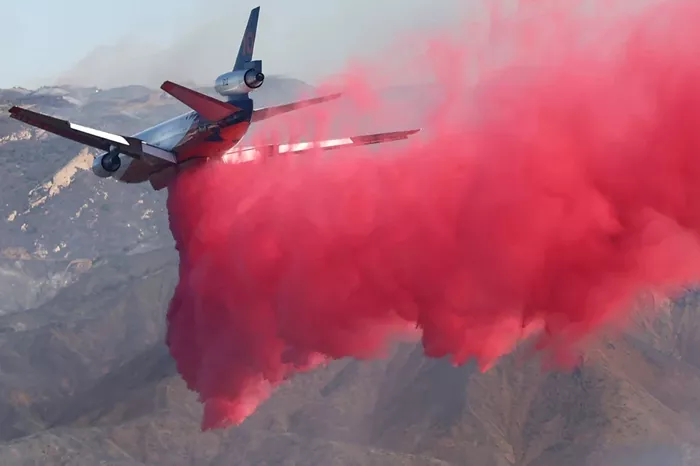As wildfires rage through the Los Angeles area, firefighters are using more than just water to fight the flames. In a critical effort to protect communities, aerial teams are dropping hundreds of thousands of gallons of bright pink fire retardant, aiming to slow the infernos before they can cause further devastation.
These fires have tragically claimed at least 24 lives, displaced thousands of residents, and destroyed over 12,000 structures since they began earlier this week. With winds gusting fiercely through the region, fire crews face immense challenges in battling the blazes, especially in rugged, hard-to-reach terrain. According to Cal Fire, four fires have scorched an estimated 62 square miles, as strong Santa Ana winds continue to fuel the flames.
While fire retardants are a crucial tool in wildfire management, many are questioning the safety and environmental impact of the substances being used. Here’s what we know:
Why Are Fire Retardants Being Used in Los Angeles?
As the fires burn uncontrollably through canyons and mountainous areas, firefighting crews are deploying aerial suppressants to control the spread. These regions are difficult for ground crews to access, making aerial firefighting essential. However, experts note that high winds can interfere with the effectiveness of the retardants, making it challenging to ensure that the suppressant reaches the ground before dissipating.
Alongside Cal Fire, several agencies, including the U.S. Forest Service and local fire departments, have been dropping retardant to fight the fires and protect surrounding communities.
How Do Fire Retardants Work?
Aerial fire retardants are typically a mixture of water, ammonium phosphate (a fertilizer), and iron oxide to give it its signature pink color. According to Daniel McCurry, a civil and environmental engineering professor at the University of Southern California, these chemicals help slow the spread of fires by cooling down and coating vegetation. By starving the fire of oxygen and slowing the rate of combustion, the retardants create a protective barrier around structures and natural areas.
Why Fire Retardants Are Crucial for Public Safety
The use of fire retardants is essential not only to control the wildfires but also to reduce the health risks posed by wildfire smoke. Studies have shown that wildfire smoke contributes significantly to harmful air pollution, which can lead to respiratory and cardiovascular issues. Research from the Alzheimer’s Association also suggests that wildfire smoke could be especially damaging to brain health, increasing the risk of dementia.
Edward Goldberg, vice chairman of Perimeter, stated, “Using wildland fire retardants is the best way to save lives, protect communities, and keep fires under control.”
While more research is needed on the long-term effects of fire retardants, McCurry acknowledges their importance in wildfire management: “If there was a brush fire coming for my house, I’d still rather have a lot of fire retardant in front of it.”
Read more:
- Pfizer Goes All-In On Obesity Treatment, Focuses On Oral Weight-Loss Pill Development
- J&J Makes $14.6 Billion Bet On Neurological Drugs With Intra-Cellular Acquisition
- Dementia Risk Soars As Americans Live Longer, New Study Finds


